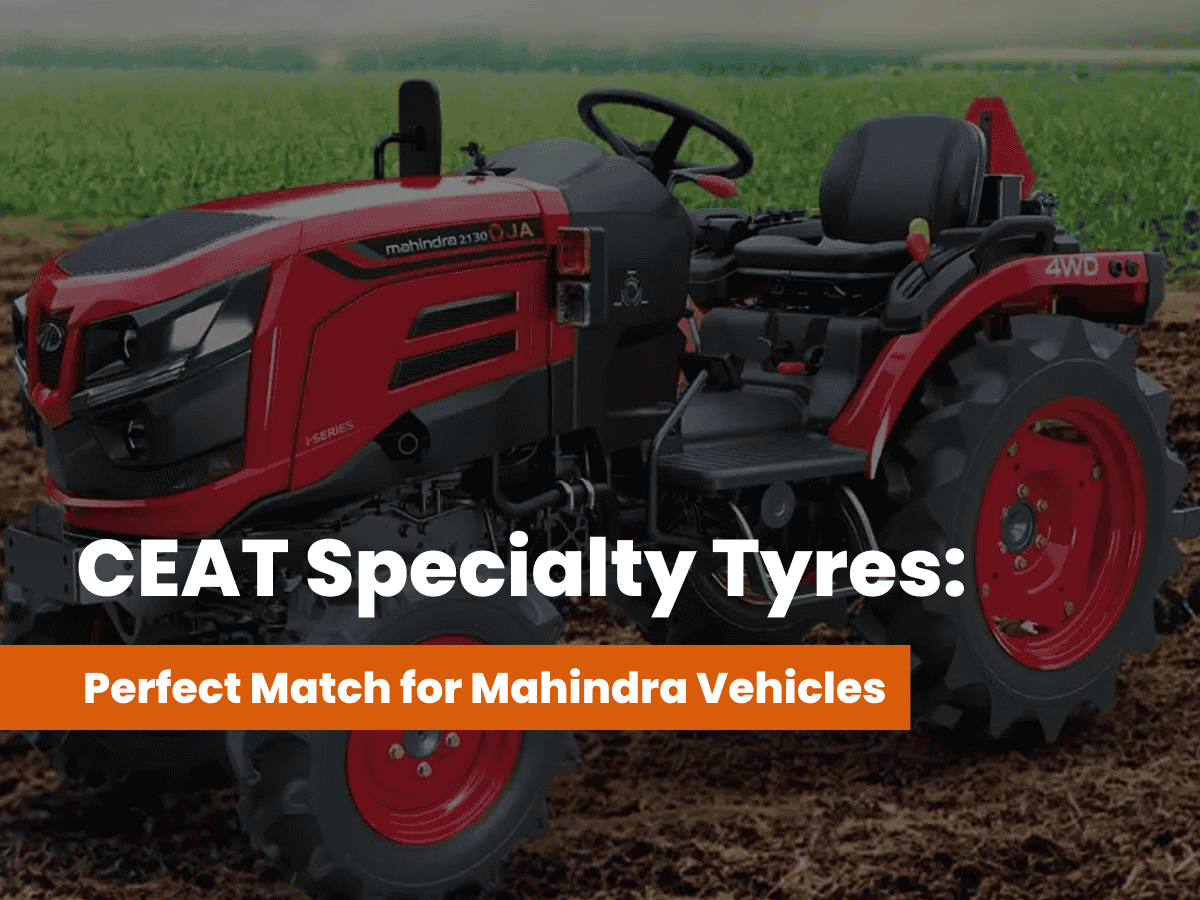ceat-speciality:blogs-tags/all,ceat-speciality:blogs-tags/oem
Tailoring Tyre Solutions for Specific OEM Requirements
Mon, 13 Jan 2025 | PRODUCTS
Original Equipment Manufacturers (OEMs) face increasingly stringent demands when it comes to the components they use in vehicle production. Tyres, one of the most critical components, are no exception. The ability to provide tailored tyre solutions that meet specific OEM requirements is a fundamental challenge for manufacturers. This customisation is not simply about meeting a specification; it involves understanding the complex needs of vehicle manufacturers, from performance to safety, cost-efficiency, and sustainability.
The Importance of Tailored Tyre Solutions
OEMs are looking for tyres that offer more than just reliable performance. These tyres need to align with the unique design, engineering, and performance characteristics of each vehicle.
Tailoring tyres to OEM requirements involves addressing a range of factors, including:
- Vehicle Type and Usage
Trucks and off-road vehicles each have vastly different needs when it comes to tyre performance. A commercial truck, for instance, requires tyres that are built to withstand heavy loads over long distances, ensuring both safety and durability.
- Performance Specifications
Performance parameters, such as ride comfort, noise reduction, fuel efficiency, and wet and dry traction, must all be considered when developing tyres for OEMs.
- Environmental Considerations
Environmental sustainability is increasingly becoming a central concern in vehicle manufacturing. Tyre manufacturers must comply with OEM requirements for lower rolling resistance, which helps improve fuel efficiency and reduce CO2 emissions. Moreover, the move toward eco-friendly tyres—using sustainable materials and manufacturing processes—aligns with OEMs’ broader sustainability goals.
- Design Integration
The integration of tyres into the overall vehicle design is also a critical consideration. Tyres need to complement the vehicle's aesthetic, size, and load capacity, not just in terms of fit but also in their performance within the vehicle’s specific design parameters. For instance, the sidewall design, tread pattern, and tyre profile should align with the vehicle's aerodynamics and overall look, ensuring both functionality and brand consistency.
The Process of Tailoring Tyre Solutions
Developing tyres tailored to specific OEM requirements requires a multi-step process involving close collaboration between tyre manufacturers and OEMs. This collaboration ensures that every detail—ranging from the tyre composition to performance characteristics—is optimised for the vehicle's intended use.
- Understanding OEM Needs
The first step is a deep dive into the OEM’s needs. This requires detailed discussions with vehicle manufacturers to understand their performance targets, safety standards, and aesthetic preferences. These discussions often involve engineers and designers from both sides working together to determine the optimal tyre solution.
- Research and Development (R&D)
The next step is intense research and development. Tyre manufacturers invest heavily in R&D to create tyres that meet the exacting standards of OEMs. This includes experimenting with different compounds, tread designs, and materials to achieve the desired performance. The R&D phase also includes testing in various conditions to ensure that the tyres perform as expected in real-world scenarios.
- Prototyping and Testing
Once a design is developed, tyre manufacturers create prototypes for testing. These prototypes undergo a series of rigorous tests to assess their durability, handling, comfort, fuel efficiency, and other critical performance metrics. OEMs often conduct their own tests as well to verify that the tyres meet their expectations.
- Manufacturing and Quality Control
Once the tyre design has passed all tests, the production process begins. Tyre manufacturers use advanced manufacturing techniques to produce the tyres with the highest level of precision. The quality control process ensures that every tyre meets strict performance and safety standards, with consistent quality across large production volumes.
- Logistics and Delivery
Finally, tyres must be delivered on time and in the quantities required by OEMs. This often involves sophisticated logistics systems to manage inventory, distribution, and just-in-time delivery, ensuring that tyres are available when and where they are needed, without delays in the production process.
Conclusion
At CEAT Specialty UK, we are committed to understanding and responding to the unique needs of each OEM, offering tailored solutions that exceed expectations. Whether it's enhancing fuel efficiency, improving safety, or meeting sustainability goals, our tyres are engineered for the future of automotive performance.




